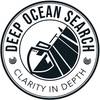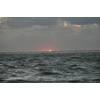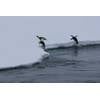Guidance for NSF on National Ocean Research Priorities
Context
Within the past decade, new science and technologies have led to breakthroughs and discoveries that have fundamentally altered our basic understanding of the oceans and their relationship to human populations. The value of the ocean to society has been highlighted by multiple commissions (the Pew Oceans Commission; the U.S. Commission on Ocean Policy) and a science-based National Ocean Policy has been developed. These reports highlight ongoing changes to oceanic environments that threaten the societal benefits derived from the sea, yet much of the ocean remains unexplored and poorly understood. Better understanding of the role of the oceans in earth system dynamics is also greatly needed.
The National Science Foundation is the principal federal agency that funds basic research in the ocean sciences at academic institutions throughout the U.S. Our increasing knowledge of the oceans has been supported by the advent of new technologies and facilities that enable new frontiers to be explored. The operational cost of these new forms of infrastructure and the rising costs associated with existing facilities have created budgetary challenges for NSF. In particular, the fraction of the NSF budget devoted to support for ocean infrastructure has been increasing in recent years while total funds available have flattened.
NSF would benefit from guidance from the ocean sciences community on research and facilities priorities for the coming decade aligned with reasonable expectation of the level of resources to be made available. NSF seeks input on: appropriate levels of investment in infrastructure, individual investigator-based science, and multi-investigator large research programs; the relative value of investments in targeted, interdisciplinary, cross-directorate initiatives like NSF’s Science, Engineering, and Education for Sustainability (SEES) portfolio; and development of ideas for new initiatives including their estimated costs and impact on the overall portfolio. In addition, the priorities and investments of the other federal agencies that conduct mission-driven research or support facilities in the ocean sciences must also be considered so as to avoid redundancies and gain synergies.
NSF would benefit from enhanced community engagement and input on long range research priorities and strategies to optimize investments in the ocean sciences. Other disciplines and federal agencies have successfully used a decadal survey process to obtain strategic guidance on priorities relative to current costs and projections of resource availability, thereby enabling limited resources to be used more effectively. While there have been previous well-conducted, community-based efforts to define overall research priorities for the ocean sciences (e.g., Ocean Research Priorities Plan, 2007; updated in 2013) and numerous National Research Council reports that develop priorities for various segments of the ocean sciences, these have not been constrained by resource availability or tradeoffs among competing investments. Hence, they do not address the broader issue of how to balance the full portfolio of NSF’s ocean research investments. The goal of this study is to begin a community-based, regularly recurring, decadal survey approach to the visioning and setting of NSF-funded research priorities in the ocean sciences within the context of likely available resources.
Scope
The scope of this study includes all areas of NSF-funded research and infrastructure related to our understanding of the oceans and their interaction with human populations and their role in earth system dynamics including: biological, chemical, and physical oceanography; marine geology and geophysics; marine ecology and conservation, ecosystem science, ocean-related climate science, remote sensing; ocean engineering; the social sciences as applied to the oceans; ocean informatics/data science; highly interdisciplinary areas of research that cross multiple NSF Directorates. Infrastructure includes the academic fleet (surface and submersible platforms), ocean drilling platforms, ocean observing sensors and platforms, major shared-use instrumentation, cyber-infrastructure, and the development of new technological innovations. The geographic context includes all oceans of the world including the polar regions, the sea floor, estuaries, the coastal zone, and the Great Lakes.
Audience
The primary audiences for this report are senior agency officials at NSF and other relevant agencies, the National Ocean Council, examiners at the Office of Management and Budget, the White House Office of Science and Technology Policy, Congressional staff and committees, the academic community, and non-governmental organizations and members of industry with an interest in ocean science and policy.
Statement of Task
The committee for the Decadal Survey of Ocean Sciences 2015 (DSOS) will develop a list of the top ocean science priorities for the next decade in the context of the current state of knowledge, ongoing research activities, and resource availability. The DSOS committee’s report will present compelling research strategy for increased understanding of the oceans over the decade 2015-2025.
The report will include the following elements:
1. A review of the current state of knowledge that highlights findings and technologies over the past decade that have advanced our basic understanding of the oceans, driven new discoveries, created new paradigms; or established new societal imperatives. The review should also consider new science and technologies emerging from other disciplines that could be applied to the ocean sciences.
2. A concise set of compelling, high level scientific questions that will be central to the ocean sciences over the coming decade and, if answered, could transform our scientific knowledge of the oceans. Prioritization may be derived from relevance to societal benefits, new technological breakthroughs, emerging or underdeveloped yet vital subjects poised for rapid development, or other drivers. The scientific questions and related priorities need not be all-inclusive and should be limited to 10 or fewer. The goal is to identify areas of strategic investment with the highest potential payoff.
3. An analysis of the research infrastructure needed to address the priority research topics or questions. This will include an assessment of the current portfolio of facilities investments funded by NSF and their operational costs (information to be provided by NSF) as well as proposed new facilities. If new facilities are proposed, the committee will provide a range of estimates for the cost (upper and lower bounds) and include not only construction but also the full life cycle costs for operations and maintenance. The analysis should also consider capacity to respond to unexpected events.
4. An analysis of the current portfolio of investments in ocean science programs at NSF with recommendations for changes necessary, if any, to align resources so as to achieve the priorities established in #2. The current portfolio includes programs within the Division of Ocean Sciences and allied program areas (e.g., Polar Programs, Biodiversity) as well as NSF-wide cross-divisional/cross-directorate initiatives that target highly interdisciplinary themes involving the ocean (e.g., SEES).
5. Identify opportunities for NSF to complement the capabilities, expertise, and strategic plans of other federal agencies so as to avoid duplication of effort, encourage collaboration and shared use of research assets where appropriate, and maximize the value of NSF investments in the ocean sciences. This will be based on a brief survey of major ocean research programs funded by other Federal agencies.
The final report will recommend a strategy to optimize investments that will advance knowledge in the most critical and/or opportune areas of investigation while also continuing to support core disciplinary science and infrastructure. The recommendations of the committee should include guidance on the most effective portfolio of investments achievable at the current funding level that will support both the research infrastructure (#3) and programmatic science (#4) necessary to address the most significant priorities. This should include assessing trade-offs among options and identifying potential cost saving mechanisms; assessing the impact of new initiatives and /or modification of existing programs on the overall portfolio as well as identifying opportunities for collaboration among the federal agencies that would leverage investments, optimize use of infrastructure assets, and foster multidisciplinary research. The report will include decision rules on how the program could be adjusted if future funding levels increase or decrease relative to the current level.
Work Plan
A committee of 20 members will be assembled to reflect the diversity of topics covered by the ocean sciences as defined in the scope section. In addition to discipline-specific expertise, the committee will include members with expertise in education, engineering and technology, research program management, and those with broad knowledge of the ocean sciences and its connections to other disciplines. The composition of the committee should also reflect diversity with respect to the geography and nature of the home institutions of its members (e.g., public, private, four-year; M.S., doctoral), the inclusion of early-career as well as distinguished senior scientists, and historically under-represented groups.
The committee will convene six meetings to gather information and prepare the report. A final, seventh meeting will be reserved for responding to the comments of the external reviewers and finalizing the report. The committee will focus first on developing the retrospective assessment of key advancements and the projected research priorities and questions for the coming decade. Subsequent work will identify the required portfolios of facilities and infrastructure and science programs in the context of present NSF organizational structure. The committee may establish subcommittees to carry out its tasks and these will be organized at the first committee meeting. Subcommittees may convene virtual meetings electronically in between those of the full committee. The committee may also, at its discretion, enlist the advice of experts outside of the membership of the committee to provide additional expertise and/or advice on topics of special interest.
The success of this effort depends heavily upon broad community engagement. The committee will develop a plan for community continuing and regular input and engagement at its first meeting. It is expected that the committee will make full use of existing recent reports, plans, and strategies that were developed by prior community-based efforts. These documents include but are not limited to: the updated Ocean Research Priorities Plan, the National Ocean Policy and Implementation Plan, recent NRC reports on ocean science and infrastructure, strategic plans from other federal agencies, and decadal surveys or research plans from allied disciplines. In addition, it is expected that the committee will hold town halls or workshops at national societal meetings or other venues, solicit community white papers, and create a website and/or other electronic means to facilitate community input.
The committee will prepare and deliver a prepublication copy of its final report within 20 months of receipt of funds. Sponsor(s) will be briefed upon completion of the report and briefings will be offered to congressional offices and committees. The last four months of the project will cover report publication and dissemination activities. Additional dissemination of the report may include presentations at professional society meetings and derivative products such as a report-in-brief, summary sheet of key findings, or a web page.













 February 2025
February 2025



